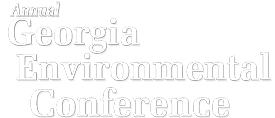Wednesday, August 21 @ 9:30-11 a.m.
ES1. Student Research Presentation Session
The invited Student Scholarship finalists will present their research, with time for Q&A, and will be moderated by Scott Anderson, Haley & Aldrich, GEC Scholarship Committee Chair. Each Finalist will also present their research throughout the conference near the main stage in the Exhibit Hall and be available for your rapid-fire questions as you give your assessment and cast your vote for winners.
Student Scholarship Finalists:
TBA
ES2. Rural and Remote Brownfields – US Hwy. 17 Gullah Geechee Corridor and UST/Petroleum Brownfield Workshops
This is a focused workshop of determining eligibility for EPA Targeted Brownfields Assessment (TBA) Assistance and/or GA EPD UST resources to address abandoned Underground Storage Tanks. Eligibility and Reuse options will be presented.
ES3. GAEP’s Speed Networking Event
The Georgia Association of Environmental Professionals (GAEP)’s Speed Networking event connects you with environmental professionals across Georgia. Score valuable insights, explore job opportunities, and build your network – all in a fun, fast-paced format!
ES4. GEC Studios presents Commissioner Tim Echols
Throughout the full Conference this year, our good friend, Commissioner Tim Echols, will be in our GEC Broadcast Studio recording episodes for his podcast and radio show, Energy Matters. To be on his show, send him an email at psctim@gmail.com or drop by the booth. To hear a show, go to wherever you get your podcast, and search for Energy Matters with Commissioner Echols!
ES5. Energy 2.0
State of the energy market and the shift from the way we currently buy and consume energy. Discussion to include onsite renewable power and battery use, including use on Brownfield properties.
